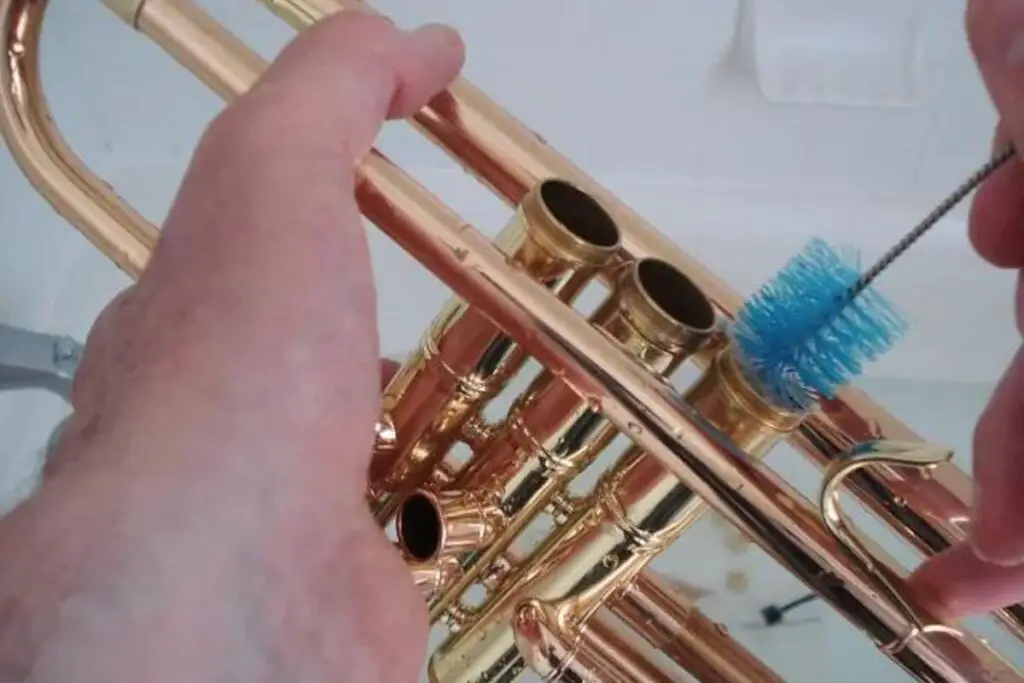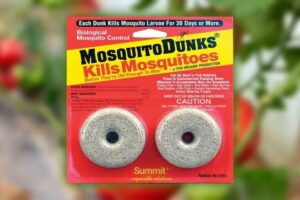Maintaining your trumpet is crucial for preserving its tone, playability, and overall longevity. Regular cleaning, including occasional baths, helps remove accumulated grime and extends the life of your beloved instrument. In this comprehensive guide, we’ll explore the step-by-step process of giving your trumpet a bath to keep it shining and playing beautifully.
I. Understanding the Importance of Trumpet Baths

A. Removal of Accumulated Residue
- Regular playing leads to the accumulation of oils, dust, and debris on the trumpet’s surface and inside its tubing. A bath helps dislodge and remove these residues.
B. Preservation of Tone Quality
- Cleaning the trumpet, including a bath, contributes to maintaining the instrument’s original tonal quality. A clean trumpet produces a clearer and more resonant sound.
C. Prevention of Corrosion
- Bathing helps prevent corrosion by removing moisture and acidic deposits that can accumulate over time, especially in areas prone to condensation.
II. Preparation for Trumpet Bathing
A. Gathering Necessary Supplies
i. Warm Water:
- Fill a large basin or bathtub with warm water. The water should be lukewarm, not hot, to avoid damaging the trumpet’s lacquer or finish.
ii. Mild Dish Soap:
- Add a small amount of mild dish soap to the water. This helps break down oils and dirt more effectively.
iii. Soft Brushes:
- Acquire soft brushes for cleaning various parts of the trumpet, including valve casings, slides, and tubing.
iv. Valve Casing Brush:
- Invest in a valve casing brush specifically designed for cleaning inside the valve casings.
v. Valve Oil and Slide Grease:
- Have valve oil and slide grease on hand for lubricating valves and slides after the bath.
III. Disassembling the Trumpet
A. Removing Valves and Slides
- Carefully remove all valves and slides from the trumpet. Take note of their order and placement for reassembly.
B. Inspecting for Damage
- While disassembling, inspect each part for any signs of damage, such as bent slides or worn valve felts. Address any issues before proceeding.
IV. The Trumpet Bathing Process
A. Submerging in Warm Soapy Water
- Submerge the trumpet parts in the warm, soapy water. Ensure that each piece is fully covered.
B. Brushing and Cleaning
- Use the soft brushes to clean the trumpet thoroughly. Pay special attention to valve casings, slides, and any intricate details.
C. Rinsing with Clean Water
- Rinse each part with clean, lukewarm water to remove soap residue. Ensure all soap is thoroughly washed away.
D. Drying the Trumpet Components
- Place the cleaned trumpet parts on a soft, absorbent towel to air dry. Avoid using heat or direct sunlight, as it can damage the finish.
V. Valve and Slide Maintenance
A. Applying Valve Oil
- Apply a small amount of valve oil to each valve, ensuring smooth and efficient movement. Reassemble the valves into their respective casings.
B. Greasing Slides
- Apply slide grease to the slides before carefully reassembling them. Ensure smooth sliding action.
VI. Polishing the Trumpet
A. Using a Soft Cloth
- Once fully assembled, use a soft, lint-free cloth to gently polish the trumpet. This adds a shine to the lacquer or finish.
B. Avoiding Abrasive Polishing Compounds
- Avoid using abrasive polishing compounds, as they can remove lacquer and alter the trumpet’s appearance.
VII. Regular Maintenance Routine
A. Establishing a Cleaning Schedule
- Develop a routine cleaning schedule to keep your trumpet in top condition. Regular maintenance reduces the need for intensive baths.
VIII. A Revitalized Trumpet Ready to Play
In conclusion, giving your trumpet a bath is a vital aspect of instrument maintenance. A clean trumpet not only looks better but also plays better, producing the clear and resonant tones that musicians strive for. By following these steps and incorporating regular cleaning into your trumpet care routine, you ensure that your instrument remains a joy to play for years to come.
May your trumpet always sound its best, reflecting the care and attention you provide through regular bathing and maintenance.
IX. Post-Bath Trumpet Care
A. Inspection and Testing
- After the trumpet components have dried, inspect each part carefully. Test the valves and slides to ensure they move smoothly without any sticking or resistance.
B. Checking for Water Residue
- Inspect each tubing and valve casing for any lingering water residue. Use a lint-free cloth to gently absorb any remaining moisture.
X. Advanced Trumpet Care Tips
A. Deep Cleaning Procedures
- Consider periodic deep cleaning procedures, including removing the leadpipe and tuning slides for more thorough cleaning. Consult with a professional if you’re unsure about these advanced processes.
B. Professional Servicing
- Periodically, have your trumpet professionally serviced. A trained technician can address any issues, perform adjustments, and ensure your instrument’s optimal performance.
XI. Avoiding Common Pitfalls
A. Overuse of Cleaning Agents
- Avoid overusing cleaning agents or abrasive materials. Too much cleaning can wear down the lacquer and affect the trumpet’s finish.
B. Ignoring Signs of Damage
- Don’t ignore signs of damage during the inspection process. Address any issues promptly to prevent further damage and maintain the trumpet’s integrity.
XII. Storing Your Trumpet
A. Proper Storage Conditions
- Store your trumpet in a protective case in a dry, cool environment. Avoid extreme temperatures and humidity, as these can impact the instrument’s condition.
B. Regular Case Cleaning
- Periodically clean the trumpet case to prevent dust and debris from accumulating. A clean case helps maintain the trumpet’s overall cleanliness.
XIII. Enhancing Your Trumpet Experience
A. Mouthpiece Cleaning
- Don’t forget to regularly clean your trumpet mouthpiece. Use a dedicated mouthpiece brush and warm water to remove any residue.
B. Personalizing Your Trumpet
- Consider adding personal touches, such as unique valve buttons or custom finishes, to make your trumpet truly yours. Personalization can enhance your connection with the instrument.
XIV. Conclusion: Elevating Your Musical Journey
In conclusion, giving your trumpet a bath is just one element of a comprehensive care routine. By incorporating regular maintenance, advanced care practices, and attention to detail, you elevate your musical experience and ensure your trumpet remains a reliable companion throughout your musical journey.
May your trumpet always sing with clarity and brilliance, reflecting the dedication and care you invest in its maintenance. Play on, and let the music resonate!
Frequently Asked Questions (FAQs) about Trumpet Maintenance and Bathing
How often should I give my trumpet a bath?
Generally, a trumpet bath is recommended every few months or when you notice a buildup of grime. Regular valve and slide maintenance should be part of your routine.
Can I use regular soap for cleaning my trumpet?
It’s advisable to use mild dish soap specifically designed for cleaning instruments. Regular soap may contain additives that can harm the trumpet’s finish.
Is it necessary to disassemble the trumpet for every bath?
Disassembling the trumpet for a thorough cleaning is recommended periodically. However, routine maintenance can be done without complete disassembly.
How can I prevent my trumpet from corroding?
Regularly clean and dry your trumpet after each use to prevent moisture buildup. Store it in a protective case in a cool, dry environment to minimize the risk of corrosion.
Can I use valve oil on my trumpet’s slides?
Valve oil is designed for valves, not slides. Use slide grease specifically formulated for trumpet slides to ensure proper lubrication.
How do I know if my trumpet needs professional servicing?
Signs of sticking valves, difficulty playing certain notes, or unusual sounds may indicate a need for professional servicing. Periodic check-ups by a qualified technician are also advisable.
Can I use a hairdryer to speed up the drying process after a bath?
It’s not recommended to use a hairdryer, as the heat can damage the trumpet’s finish. Allow the components to air dry naturally on a clean, absorbent surface.
Should I oil the valves immediately after a bath?
Yes, it’s essential to apply valve oil to the valves promptly after a bath to ensure smooth operation. Apply a small amount to each valve and work the valves to distribute the oil.
Can I use polishing compounds to make my trumpet shine more?
Avoid abrasive polishing compounds, as they can remove the lacquer and affect the trumpet’s appearance. Use a soft, lint-free cloth for gentle polishing.
How can I prevent mold or mildew in my trumpet case?
Ensure your trumpet is completely dry before storing it in the case. Periodically clean the case interior with a cloth to prevent the growth of mold or mildew.
Remember, proper maintenance and care contribute to the longevity and performance of your trumpet. If you have specific concerns or encounter issues, consult with a professional instrument technician for guidance.



